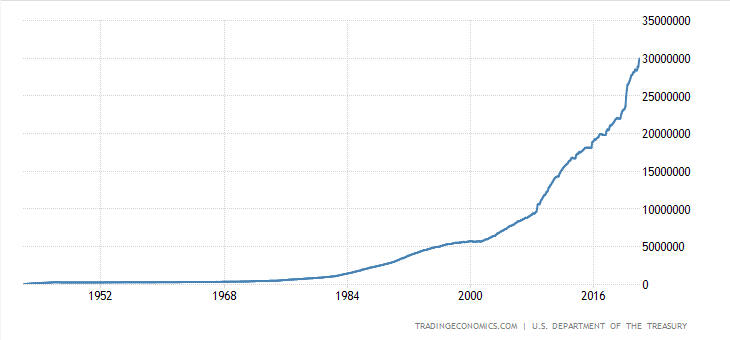So our national debt is at thirty trillion dollars and growing ... so what? Is that anywhere close to a bazillion or a gazillion? After all, it's only thirty trillion, not something substantial like one hundred or one thousand trillion. It doesn't sound as big as the debt at the end of the 1970's when it was eight hundred fifty billion. That sounds like a whole lot more ...
I think one of the problems in getting people interested in dealing with the national debt is that nobody can relate to a billion or a trillion of anything. So in order to bring the national debt into terms that we can try to understand, here are some national debt fun facts.
A United States One Dollar Bill is 6.14 inches long, 2.61 inches wide, 0.0043 inches thick, and weighs 0.0353 ounces.
Using the dimensions and weight of a one dollar bill, the National Debt as of the end of January, 2022 ($30,012,386,000,000, rounded to millions of dollars) [Monthly Statement of the Public Debt of the United States, source www.treasurydirect.gov] 30,012,386,000,000 one dollar bills ...
-
... when stacked would be over two million miles
(2,036,825 mi) high,
enough to reach from the earth to the moon over 8 1/2 times.
... when placed end-to-end would be almost three billion miles (2,908,397,254 mi) long, enough to reach from the earth to the sun over 32 times (32.2 Astronomical Units).
... when arranged in a cube would be over one thousand feet (1052 ft, more than three football fields) wide, long, and high. Try to imagine a thirty story building on top of the St. Louis Arch. That's how high (and wide and long) it would be. It would weigh over sixty six billion pounds (66,214,826,613 lb). That's over thirty three million tons (33,107,413 tn).|
Here's a chart of the national debt over the last sixty years or so. See a trend? |
|
The people of this nation have sold themselves
and their descendents into financial slavery to the government. If you care
about your future and that of your children, grandchildren,
great-grandchildren, etc, I ask you to vote for people who will not just
reduce the national deficit (the amount that the nation spends
beyond what it makes), but will eliminate the national deficit
and begin reducing the national debt.
References
